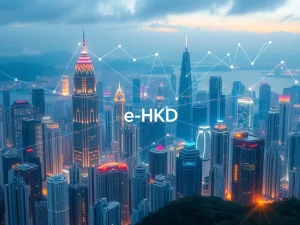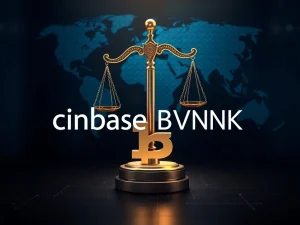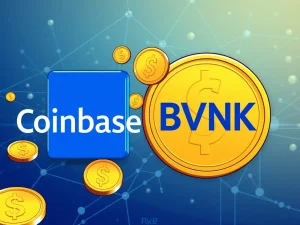Ultimate Web3 Control: Why Decentralization Demands More Than Ownership

In the exciting realm of Web3, the conversation often revolves around ownership. You own your NFTs, your tokens, your data – sounds revolutionary, right? But what if ownership is just the tip of the iceberg? What if the real prize, the true game-changer in this decentralized digital frontier, is something even more profound? It’s not just about owning pieces of the pie; it’s about controlling how the pie is made, who gets a slice, and even the recipe itself. Welcome to the world where Web3 control reigns supreme, and digital ownership is merely the starting point.
Why is Decentralized Control the Real Endgame in Web3?
We’ve been told for years that blockchain and Web3 are about giving power back to the people. Ownership is a big part of that narrative. Finally, you can own your digital assets without relying on centralized institutions. But think about it – ownership without decentralized control is like owning a car but not having the keys or the steering wheel. You might have the title, but you’re not really in the driver’s seat.
Decentralized control goes beyond just possessing digital assets. It’s about having the ability to influence and direct the systems and platforms you interact with. It’s about shaping the future of the internet, not just being a passive user within it. Here’s what makes control the ultimate goal:
- True Empowerment: Ownership is passive; control is active. Control empowers you to participate in governance, make decisions, and contribute to the direction of projects and platforms.
- Reduced Dependency: When you have control, you are less reliant on centralized intermediaries. This reduces the risks of censorship, single points of failure, and arbitrary rule changes.
- Enhanced Security: Blockchain control mechanisms, like decentralized governance, can lead to more secure and resilient systems. Decisions are distributed, making it harder for malicious actors to manipulate the network.
- Innovation and Customization: Control fosters innovation. When users and communities have a say, they can tailor platforms and applications to better meet their needs, leading to more diverse and user-centric solutions.
- Fairer Ecosystems: User control can lead to fairer and more equitable digital ecosystems. It distributes power and prevents monopolies, ensuring that the benefits of Web3 are shared more broadly.
What Does ‘Control’ Actually Mean in the Web3 Context?
Control in Web3 is multifaceted and goes beyond the traditional understanding of ownership. It encompasses several key aspects:
- Data Control: You decide how your data is used, who has access to it, and you can monetize it directly if you choose. This is a stark contrast to Web2, where tech giants control and profit from user data.
- Governance Control: Participating in the decision-making processes of decentralized platforms and protocols. This can involve voting on proposals, suggesting improvements, and shaping the rules of the ecosystem.
- Financial Control: Managing your assets directly through self-custody wallets and decentralized finance (DeFi) platforms, without relying on traditional financial institutions.
- Identity Control: Owning and managing your digital identity, allowing you to control how you are represented online and across different Web3 applications.
- Network Control: Contributing to the operation and security of decentralized networks, such as through staking or running nodes, and having a say in network upgrades and parameters.
Examples of Web3 Control in Action
The concept of digital ownership is evolving into tangible control through various Web3 initiatives:
- Decentralized Autonomous Organizations (DAOs): DAOs are prime examples of user control. They are community-led entities with rules encoded on a blockchain, allowing token holders to vote on proposals and collectively manage resources. DAOs demonstrate how control can be distributed and exercised in a transparent and verifiable way.
- Self-Custody Wallets: Taking control of your private keys through self-custody wallets like MetaMask or Ledger is a fundamental step towards financial control in Web3. You are not reliant on a third party to access or manage your crypto assets.
- Decentralized Identity Solutions: Projects focused on decentralized identity are giving users more control over their digital personas. Individuals can manage their credentials and data, choosing what information to share and with whom, enhancing privacy and autonomy.
- Open-Source and Community-Driven Projects: Many Web3 projects are built on open-source principles, encouraging community contributions and governance. This collaborative approach ensures that control is distributed among developers and users, rather than concentrated in a single entity.
Navigating the Challenges of Web3 Control
While the promise of Web3 control is compelling, there are challenges to overcome:
- Complexity: Web3 technologies can be complex and intimidating for the average user. Making control accessible and user-friendly is crucial for widespread adoption.
- Centralization Risks: Even in Web3, there are tendencies towards centralization, whether in infrastructure, development, or governance. Vigilance and proactive measures are needed to maintain true decentralization of control.
- User Education: Many users are still accustomed to the Web2 paradigm of passive consumption. Educating users about the importance and mechanics of control in Web3 is essential for them to actively participate and benefit.
- Security Considerations: With greater control comes greater responsibility. Users need to be educated about security best practices to protect their assets and data in a self-custodial environment.
- Governance Participation: Effective decentralized governance requires active participation from the community. Ensuring high levels of engagement and informed decision-making in DAOs and other governance mechanisms is an ongoing challenge.
Actionable Steps to Embrace Web3 Control
Ready to take the reins and embrace blockchain control? Here are some actionable steps:
- Educate Yourself: Learn about Web3 technologies, decentralized governance, and self-custody. Knowledge is the foundation of control.
- Use Self-Custody Wallets: Transition from centralized exchanges to self-custody wallets to gain direct control over your crypto assets.
- Participate in DAOs: Join DAOs related to projects you believe in and actively participate in governance discussions and voting.
- Explore Decentralized Applications (dApps): Experiment with dApps that prioritize user control and data sovereignty.
- Support Decentralized Projects: Actively support and contribute to projects that are committed to decentralization and user empowerment.
The Future is Controlled, Not Just Owned
As Web3 matures, the focus is shifting from mere digital ownership to something far more transformative: Web3 control. While owning digital assets is a significant step forward, true decentralization demands that users have the power to shape the systems and platforms they use. Control is the key to unlocking the full potential of Web3 – fostering empowerment, innovation, and fairer digital ecosystems. The future of the internet is not just about what you own, but what you can control. Embrace this shift, take control, and be a part of building a truly decentralized and user-centric digital world.







